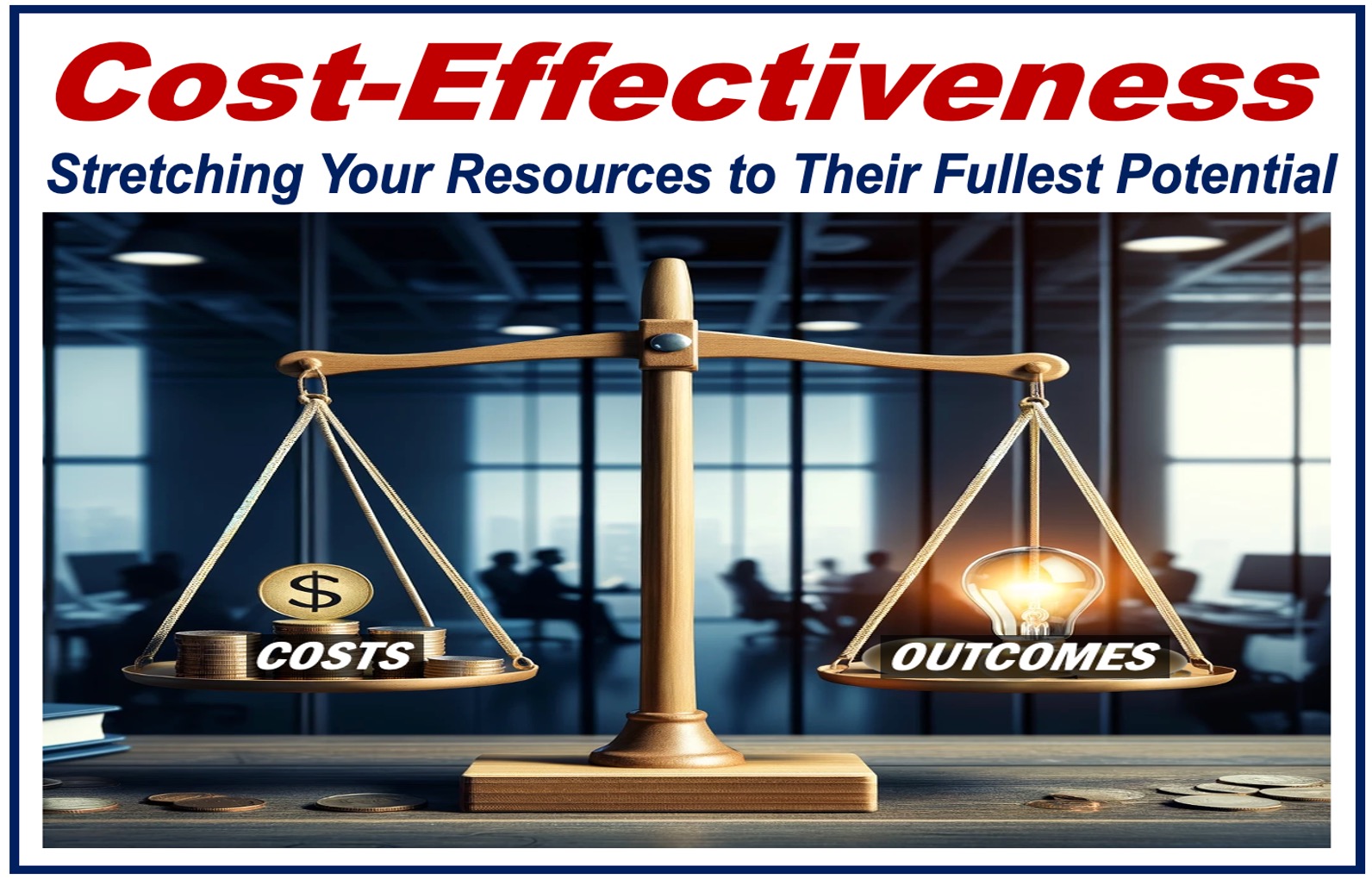When considering buying something, if your main concern is getting the most out of the money you spend, you are prioritizing Cost-Effectiveness. To use an informal expression, “Cost-effectiveness is all about getting the most bang for your buck.”
Imagine you are faced with just two choices: either purchase a fancy new car with all the latest tech and gadgets, or a reliable one that gets you from point A to B safely. Both options have costs and outcomes.
Focusing on cost-effectiveness helps you decide which option gives you the best outcome for the lowest possible cost. What would you choose if value for money mattered the most to you? You’d probably chose the reliable car rather than the fancy one.
If our resources are limited, prioritizing value for money is a smart way to make choices.
The Cambridge Dictionary says the following about the adjective “Cost Effective,” it also provides an example of how we can use the term in a sentence:
“If an activity is cost-effective, it is good value for the amount of money paid. Example Sentence: ‘It wouldn’t be cost-effective to buy an expensive new computer when all you want to do is store your photos.'”
How Does it Work?
To determine whether a choice offers the best outcome for the lowest cost, you should carry out a cost-effectiveness analysis, which breaks things down into Costs and Outcomes:
-
The Costs
The term “costs” here includes everything you spend, such as money, time, effort – whatever resources you use.
-
The Outcomes
What do you achieve? What’s the goal or benefit you want? Your outcomes need to be measurable and specific – not vague. For example, instead of saying “improve health”, you could say, “reduce the number of hospital visits”.

An Example of Cost-Effectiveness – Healthcare Decisions
Cost-effectiveness is especially important in healthcare. Imagine there are two possible drug treatments for the same illness:
- Drug A is more expensive but has better efficacy than Drug B. In other words, Drug A is more likely to cure the disease.
- Drug B is cheaper. However, it has a lower success rate.
Healthcare professionals and policymakers would benefit from carrying out a cost-effectiveness analysis. It would help them determine which drug is a better use of healthcare funds, considering both the cost and outcome differences.
Beyond Money
Cost-effectiveness is not just about spending money. The term may apply to any situation where you have goals but limited resources:
-
Businesses
Companies need to invest wisely in things like marketing, staff training, research and development, digital transformation initiatives, sustainable practices, or new equipment.
Cost-effectiveness analyses help entrepreneurs, managers, and department heads choose strategies that will bring the biggest boost to their business.
-
Governments
Governments use tax revenue to fund all sorts of programs, from education to defense, environmental protection, public healthcare, and infrastructure development.
Cost-benefit analyses help policymakers make informed decisions about how to allocate those funds effectively.
Final Thoughts
Cost-effectiveness is a powerful tool that can help us make better-informed decisions. It forces us to think clearly about what we are trying to achieve and how much money, time, and/or energy we are willing to spend to get there.
By weighing costs against outcomes, we can make choices that deliver the best value for money.
